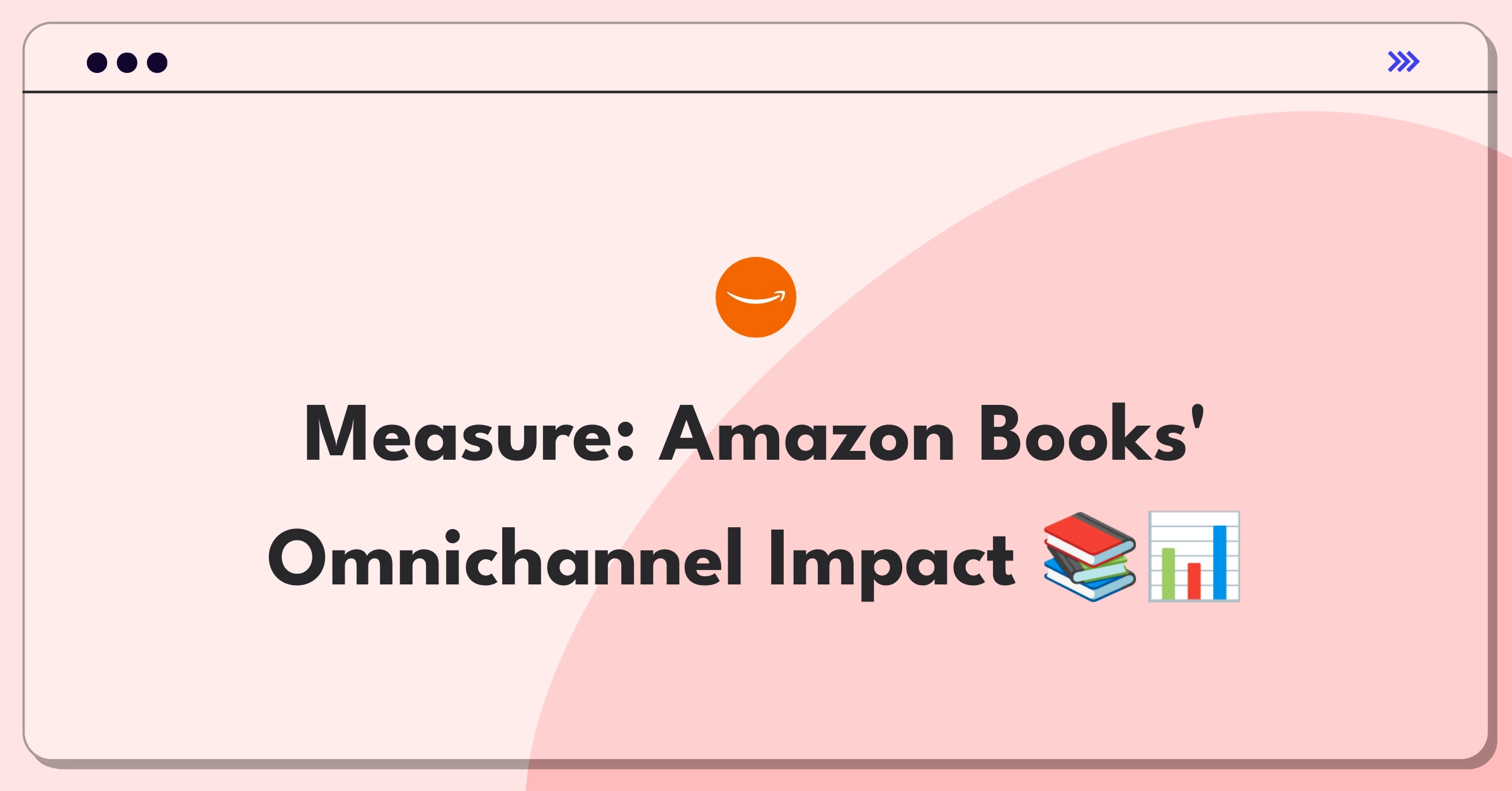Introduction
Measuring the success of Amazon Books and Physical Stores requires a comprehensive approach that considers both the unique aspects of brick-and-mortar retail and Amazon's broader e-commerce ecosystem. To address this product success metrics challenge, I'll follow a structured framework covering core metrics, supporting indicators, and risk factors while considering all key stakeholders.
Framework Overview
I'll follow a simple success metrics framework covering product context, success metrics hierarchy, and strategic initiatives.
Step 1
Product Context
Amazon Books/Physical Stores represent Amazon's foray into brick-and-mortar retail, blending traditional bookstore experiences with data-driven curation and seamless integration with Amazon's online platform. Key stakeholders include:
- Customers: Seeking a curated book selection, personalized recommendations, and a seamless omnichannel experience.
- Amazon: Aiming to expand its retail footprint, gather valuable customer data, and promote Amazon devices.
- Publishers: Looking for increased visibility and sales of their titles.
- Local communities: Interested in having a cultural hub and gathering space.
The user flow typically involves:
- Discovery: Customers find and visit the store, either through online search or local awareness.
- Browsing: Users explore curated selections, often based on Amazon's online data.
- Purchase: Customers buy books or devices, using Amazon accounts for seamless transactions.
- Post-purchase: Integration with Amazon's online ecosystem for reviews, recommendations, and future purchases.
This initiative fits into Amazon's broader strategy of creating an omnichannel retail experience, bridging the gap between online and offline shopping. Compared to competitors like Barnes & Noble, Amazon Books leverages vast amounts of customer data to curate its selection and provide a more personalized experience.
Product Lifecycle Stage: Growth phase. While the concept has proven viable, Amazon is still expanding its physical store presence and refining the model based on learnings from existing locations.
Physical Product Considerations:
- Distribution channels: Direct-to-store from Amazon's existing logistics network
- Shelf-life: Books have long shelf lives, but inventory management is crucial for bestsellers and seasonal titles
- Retail model: Hybrid of traditional bookstore and tech-enabled showroom for Amazon devices
Subscribe to access the full answer
Monthly Plan
The perfect plan for PMs who are in the final leg of their interview preparation
$99 /month
- Access to 8,000+ PM Questions
- 10 AI resume reviews credits
- Access to company guides
- Basic email support
- Access to community Q&A
Yearly Plan
The ultimate plan for aspiring PMs, SPMs and those preparing for big-tech
$99 $33 /month
- Everything in monthly plan
- Priority queue for AI resume review
- Monthly/Weekly newsletters
- Access to premium features
- Priority response to requested question


.png)